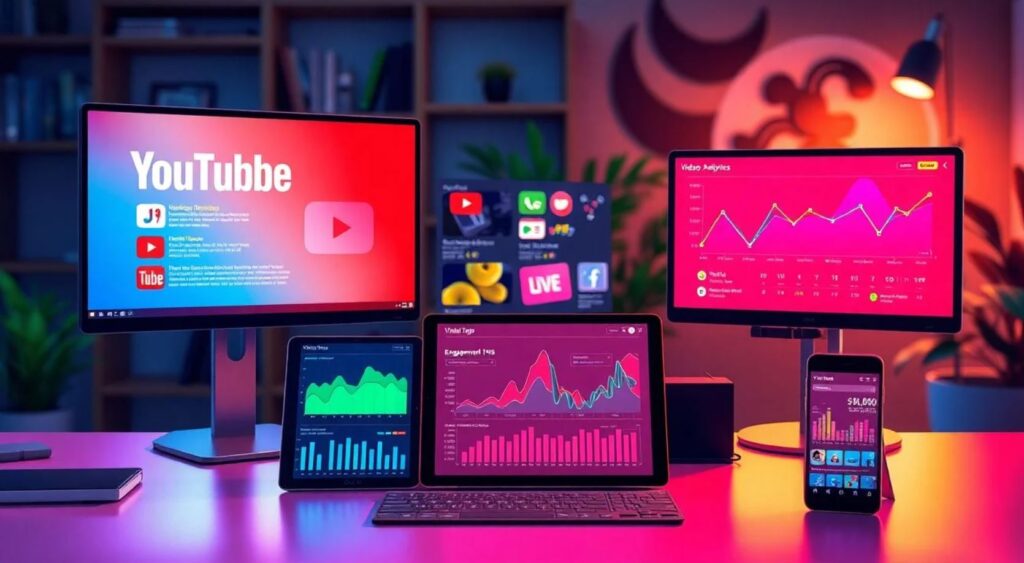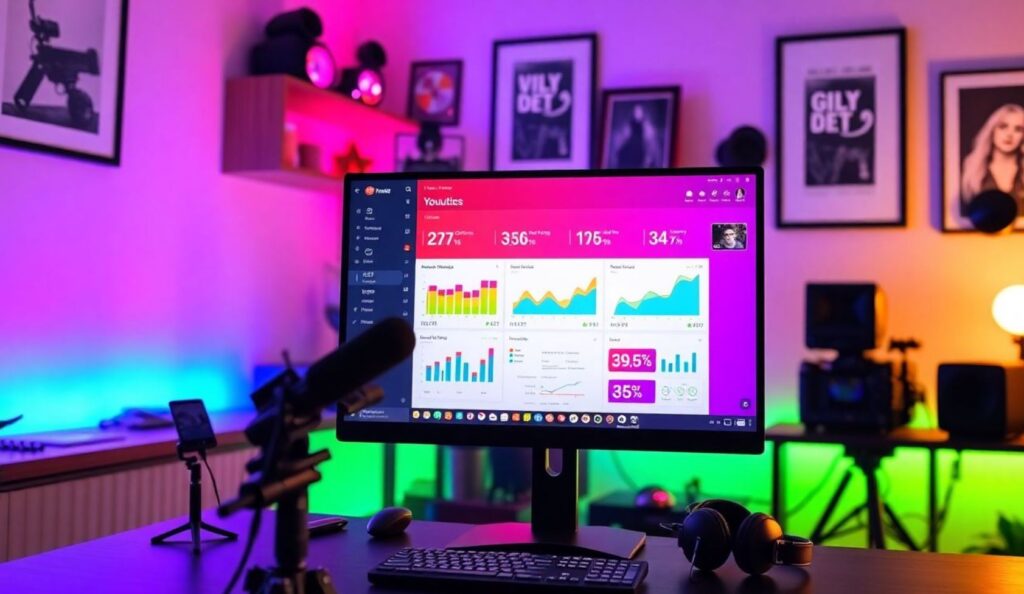Getting your videos seen by the right people depends a lot on one thing: tags. They act like signposts, helping YouTube tagging helps you understand what your content is about. When used right, tags can skyrocket your video’s reach and views and even grow your channel fast. This article covers everything from choosing the best tags to using tools that make tagging easier. Whether you’re just starting out or want to sharpen your strategy, you’ll find useful tips here.
Understanding YouTube Tags and Their Role in Video Optimization
YouTube tags are keywords that describe your video. They tell YouTube’s algorithm what your content is about. Think of tags as labels—when someone searches for those keywords, your video becomes more likely to show up. They also influence which videos are recommended alongside yours. Lately, YouTube’s algorithm has gotten smarter. Tags still matter, but they work best when combined with good titles, descriptions, and engagement.
How to Choose Effective YouTube Tags
Conducting Keyword Research for YouTube Tags
The first step is finding the right keywords. Start by typing your video topic into YouTube’s search bar. Watch how suggestions change. These are popular search terms people use. You can also use tools like TubeBuddy or vidIQ—they have features built specifically for YouTube tags. Google Trends shows which topics are trending now. Look at similar videos from top creators and see which tags they use. This research gives you fresh ideas and helps you avoid missing out.
Aligning Tags with Your Content and Audience
Your tags need to be relevant. Don’t pick popular tags just because they sound good. If your video is about vegan recipes, don’t add unrelated tags like “gaming” or “tech.” Use a mix of broad and specific tags. Broad tags reach more people, while niche tags target viewers interested in that niche. Always stay honest. Misleading tags may get your video flagged or even removed.
Tagging Best Practices for YouTube Videos
Use between 15 and 20 tags for each video. Place your main keywords at the front. For example, if your video is about “How to Bake Chocolate Chip Cookies,” start with that phrase. Mix trending tags (like “best cookies 2024”) with evergreen ones (like “cookie recipes”). Add branded tags if you’re building a brand. These strategies help your video find the right audience.
Types of YouTube Tags and Examples
Descriptive Tags and Keywords
Descriptive tags explain your content clearly. They improve your chances of appearing in search results. For example, a gaming channel might use tags like “gameplay,” “ walkthrough,” or “Let’s Play.” A tech reviewer might add “smartphone review,” “best phone 2024,” or “tablet comparison.” These tags match what viewers search for.
Trending and Popular Tags
Jump on trends by using tags related to viral topics. For instance, during a viral challenge, add tags like “dance challenge 2024” or “viral TikTok trend.” Trending tags give your content a quick boost but only if your video matches the trend.
Long-Tail Tags for Niche Targeting
Long-tail keywords are more detailed phrases. They target a narrow group of viewers. For example, instead of “cooking,” a long-tail tag could be “easy vegan dinner recipes for beginners.” These tags attract viewers looking for specific help, increasing your chance to rank higher.
Branded Tags and Campaign-Specific Tags
Using your brand name in tags builds recognition. If your channel is “Healthy Eats,” include tags like “Healthy Eats,” or “Healthy Eats recipes.” Big creators like MrBeast often use branded tags that fans associate with them. These build community and boost searchability.
Do’s and Don’ts of YouTube Tagging
Best Practices for Tag Optimization
- Keep tags relevant to your video.
- Don’t stuff your tags; avoid adding unrelated keywords.
- Update your tags after reviewing your video’s performance.
- Mix trending, evergreen, and branded tags to maximize reach.
Common Mistakes to Avoid
- Avoid overstuffing tags—use only up to 20 relevant ones.
- Never use misleading or false tags; YouTube checks for spam.
- Don’t ignore your tags once your video is live; keep an eye on how they perform.
Tools and Resources for Finding YouTube Tag Ideas
Using the right tools saves time. TubeBuddy and vidIQ are popular because they give keyword suggestions and analytics designed just for YouTube. Google Keyword Planner and Trends help you find trending topics. Browser plugins like the vidIQ extension show helpful insights directly on YouTube pages. These tools reveal what’s working for others and help you stay competitive.
Measuring the Impact of Your Tags
Check your YouTube Analytics to see how your tags are helping. Look at views, watch time, and if your video is showing up in suggested videos. If certain tags bring more viewers, focus on those. If some tags aren’t helping, swap them out for better ones. Regular testing and refining make your tagging strategy stronger over time.
Future Trends in YouTube Tagging
AI is changing how tags are used. YouTube’s smarter algorithms now analyze more than just tags—think about captions, descriptions, and even video content itself. Tags will become more integrated into personalized recommendations. Staying adaptable will help you keep up with these shifts and improve your visibility.
Also Read: Mastering YouTube Tag Trends: Boost Your Video Visibility and Reach
Conclusion: Maximize Your Video Reach with Strategic YouTube Tagging
Effective tagging is a simple but powerful way to grow your channel. Start with thorough keyword research, use a mix of tags, and keep your tags relevant. Regularly check what works and refine your approach. With consistent effort and smart strategies, your videos will reach more viewers and grow your audience steadily. Keep experimenting and stay updated on trends—your channel’s growth depends on it.





One Comment